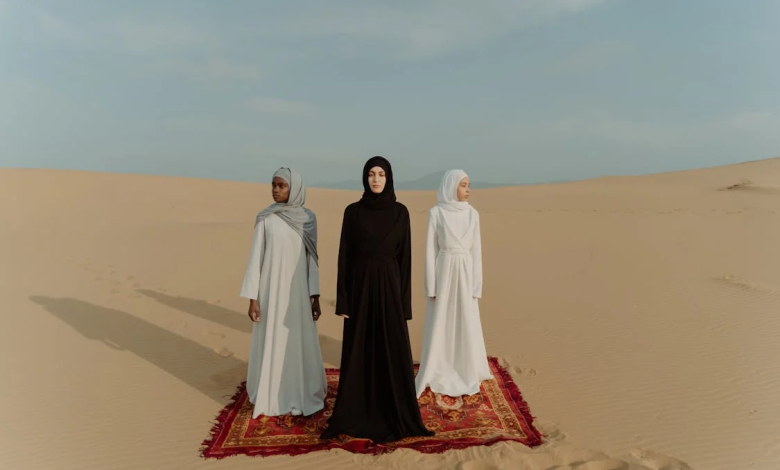The Timeless Elegance of Abayas to Exploring Traditional Styles

Abayas, the traditional attire worn by women in many parts of the world, have endured through centuries as a symbol of modesty, grace, and cultural identity. From their origins rooted in religious and cultural practices to their modern interpretations, abayas have evolved into garments that reflect both tradition and contemporary fashion.
In this article, we delve into the timeless elegance of abaya style and explore the rich diversity of traditional styles that continue to captivate hearts worldwide.
A Brief History
The history of abayas can be traced back to ancient times, with variations of the garment found across different regions and cultures. In the Arabian Peninsula, where Islam originated, abayas emerged as a garment to provide modesty and protection from the harsh desert environment. Originally, they were simple, loose-fitting robes made from lightweight fabrics such as cotton or linen.
Over time, abayas evolved to incorporate elements of regional styles and cultural influences. In countries like Saudi Arabia, the abaya became a symbol of national identity, with distinctive designs and embellishments reflecting the rich heritage of the region. In other parts of the Muslim world, such as Iran and Turkey, variations of the abaya, known as chadors and feraces respectively, developed their own unique characteristics while still preserving the essence of modesty and tradition.
The Modern Abaya
In recent decades, the abaya has undergone a remarkable transformation, propelled by shifting cultural norms and evolving fashion trends. Today, modern abayas come in a dazzling array of styles, colors, and fabrics, catering to diverse tastes and preferences. While traditional black remains a popular choice, designers have begun experimenting with bold hues, intricate embroidery, and luxurious fabrics to create abayas that are both elegant and contemporary.
One of the defining features of modern abayas is their versatility. No longer confined to solemn occasions or religious ceremonies, abayas have become fashionable everyday attire for many women around the world. Whether worn casually with jeans and a t-shirt or dressed up for a formal event, the abaya adds an unmistakable touch of sophistication to any ensemble.
Exploring Traditional Styles
Despite the proliferation of modern designs, traditional styles of abayas continue to hold a special place in the hearts of many. These timeless garments are not just pieces of clothing; they are embodiments of culture, history, and identity.
1. The Saudi Abaya
The Saudi abaya is perhaps the most iconic and recognizable style of abaya, known for its flowing silhouette and intricate embellishments. Traditionally, Saudi abayas are black in color and feature elaborate embroidery along the sleeves, hemline, and neckline. Some designs also incorporate delicate beadwork or sequins for added glamor. The Saudi abaya is often paired with a matching headscarf, or hijab, to complete the ensemble.
2. The Emirati Abaya
In the United Arab Emirates, the abaya holds a special significance as a symbol of national pride and cultural heritage. Emirati abayas are distinguished by their luxurious fabrics, exquisite craftsmanship, and elegant embellishments. They often feature intricate lacework, delicate appliqués, or Swarovski crystals, making them a favorite choice for formal occasions and celebrations.
3. The Moroccan Caftan
In Morocco, the traditional garment worn by women is known as the caftan. Similar in style to the abaya, the caftan is a long, flowing robe typically made from silk, satin, or velvet. It is adorned with elaborate embroidery, beading, and metallic threadwork, creating a dazzling display of craftsmanship and artistry. The Moroccan caftan is often worn for special events such as weddings, festivals, and religious ceremonies.
4. The Iranian Chador
In Iran, the chador is the traditional garment worn by women to cover themselves in public. Unlike the abaya, which is typically worn open, the chador is a large piece of fabric that is draped over the head and body, leaving only the face exposed. It is usually made from lightweight materials such as cotton or silk and comes in a variety of colors and patterns. The Iranian chador is a symbol of modesty and piety and is worn with pride by women across the country.
Conclusion
In a world of rapidly changing fashion trends and evolving cultural norms, the abaya stands as a timeless symbol of elegance, modesty, and tradition. From its humble beginnings as a simple garment to its modern interpretations as a fashion statement, the abaya continues to captivate hearts and minds around the world. Whether adorned with intricate embroidery, luxurious fabrics, or subtle embellishments, the abaya remains a cherished expression of identity and heritage for women across generations. As we celebrate the diversity of traditional styles and the enduring beauty of the abaya, let us remember the rich history and cultural significance that make it a truly timeless masterpiece.
